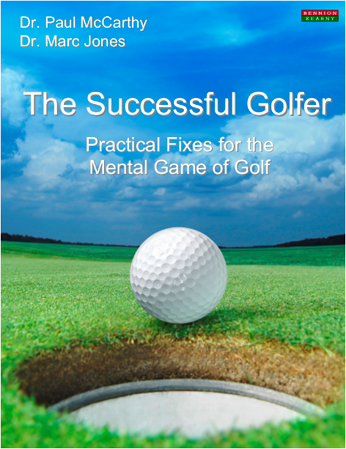How to hole out with confidence
Published:
There’s nothing more frustrating than missing short putts from inside four feet that you expect to make. It can destroy your scores and enjoyment of the game – and the doubt often spreads from poor holing out and manifests itself in greater pressure and poorer performance in other areas of your game. On the flip side, if you can happily stroke in short putts that confidence often spreads through your game, improves your scores and increases your enjoyment.
Many difficulties in holing-out stem from the fact that most people expect short putts to be holed because the ball is resting three or four feet rather than 10 feet from the hole. For the uninitiated, it resembles a football just out from the goal line waiting for someone to tap it into the net. But for those of us who have played the game, our experience tells us something else – short putts easily slip by the hole. We are all too aware that the wind, slope of the green and stroke of the putter head all influence the outcome of those short putts. But perhaps the most troubling part of the process is what’s going on inside the golfer’s mind…
The solution
There are at least two ways to solve this dilemma. In the long term, a golfer should practice short putts under stressful conditions. One way to do this is to set a target. For example, hit 15 three-foot putts in a row – and if you miss one putt before you achieve your target, you must go back to the beginning and start again. As you improve, your target will rise to 40, 60 or even 100 three-foot putts in a row. When you have practised deliberately in this way, you will have gained confidence and competence to putt well under pressure.
A second strategy in the short term would be to pay attention to your breathing. Breathe in for four seconds and breathe out for eight seconds, allow the muscles in your shoulders and arms to relax, then approach the ball. At this stage, your hands and arms should feel soft. Now you can grip the club lightly and smoothly stroke the ball. This is a useful strategy because it helps us to focus upon something that will help us putt well and it helps to remove the jerky putting strokes golfers tend to make when they are anxious.
Proof this thinking works
The study
Golf commentators and analysts often blame the length of time a golfer takes over a putt when they don’t hole it. It seems that professional golfers can take too much time over a putt and as a result, hit it poorly. But how long should a golfer spend over a putt? And does speeding up your putting routine and execution produce more holed putts? Sian Beilock, from the University of Chicago, along with her colleagues examined these questions between novice and expert golfers.
The results
For the novice golfers, going slower improved performance whereas the skilled golfers performed better by going faster. Also, the skilled golfers performed better by taking less time to plan their putt.
What you can learn
Putting better means paying attention to your skill level. If you are a low-handicap golfer, spend less time preparing and executing your putt. If you are a high-handicap golfer, take your time to prepare and execute your putt. Putting better is a matter of timing and when you’re skilled at putting do not dwell on what you have to do.
Want more help with your game? Check out our collection of tuition videos.
Get the book for more mental tips like this
This is an excerpt from ‘The Successful Golfer: Practical Fixes for the Mental Game of Golf’ by sports psychologists Dr Paul McCarthy and Dr Marc Jones. Available now for £13.99. Visit www.BennionKearny.com/golf for more information.




